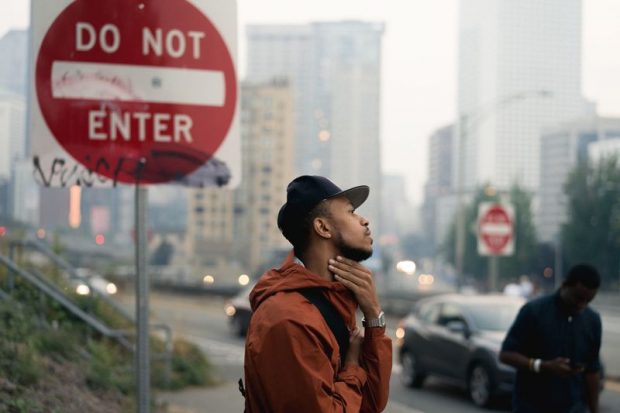Top Guidelines Of Framing Streets
What Does Framing Streets Mean?
Table of ContentsThe Definitive Guide to Framing StreetsSome Of Framing StreetsSome Ideas on Framing Streets You Should KnowThe Greatest Guide To Framing StreetsGetting The Framing Streets To WorkWhat Does Framing Streets Mean?
Photography genre "Crufts Dog Show 1968" by Tony Ray-Jones Road digital photography (additionally in some cases called candid digital photography) is photography performed for art or questions that features unmediated chance experiences and random events within public places, usually with the objective of recording pictures at a definitive or emotional moment by mindful framing and timing. 
An Unbiased View of Framing Streets
Susan Sontag, 1977 Street photography can concentrate on individuals and their actions in public. In this regard, the street photographer is similar to social documentary photographers or photojournalists who also operate in public locations, but with the objective of capturing relevant occasions. Any one of these digital photographers' pictures may catch individuals and residential property noticeable within or from public places, which commonly entails navigating ethical problems and legislations of privacy, safety, and building.
Depictions of daily public life create a category in virtually every duration of globe art, beginning in the pre-historic, Sumerian, Egyptian and early Buddhist art durations. Art managing the life of the road, whether within views of cityscapes, or as the dominant concept, shows up in the West in the canon of the North Renaissance, Baroque, Rococo, of Romanticism, Realism, Impressionism and Post-Impressionism.
An Unbiased View of Framing Streets
Louis Daguerre: "Boulevard du Temple" (1838 or 1839) In 1838 or 1839 the very first photo of figures in the street was videotaped by Louis-Jacques-Mand Daguerre in one of a set of daguerreotype views extracted from his workshop home window of the Boulevard du Temple in Paris. The second, made at the height of the day, shows an uninhabited stretch of street, while the other was taken at about 8:00 am, and as Beaumont Newhall records, "The Boulevard, so constantly loaded with a relocating throng of pedestrians and carriages was completely singular, except an individual that was having his boots cleaned.
His boots and legs were well specified, but he is without body or head, since these were in movement." Charles Ngre, waterseller Charles Ngre. https://www.blogtalkradio.com/framingstreets1 was the initial professional photographer to acquire the technological class called for to register people in activity on the street in Paris in 1851. Professional Photographer John Thomson, a Scotsman collaborating with journalist and social activist Adolphe Smith, published Street Life in London in twelve month-to-month installments beginning in February 1877
Some Known Questions About Framing Streets.
Eugene Atget is considered a progenitor, not since he was the very first of his kind, but as an outcome of the popularisation in the late 1920s of his record of Parisian streets by Berenice Abbott, who was inspired to undertake a similar paperwork of New york city City. [] As the city created, Atget aided to advertise Parisian roads as a deserving topic for digital photography.

Things about Framing Streets
Martin is the first tape-recorded professional photographer to do so in London with a disguised camera. Mass-Observation was a social research organisation founded in 1937 which aimed to tape daily life in Britain and to videotape the responses of the 'man-in-the-street' to King Edward VIII's abdication in 1936 to wed divorce Wallis Simpson, and the succession of George VI. In between 1946 and 1957 Le Groupe des XV annually exhibited job of this kind. Andre Kertesz. Circus, Budapest, 19 May 1920 Street photography created the significant material of two exhibits at the Gallery of Modern Art (Mo, MA) in New York curated by Edward Steichen, Five French Photographers: Brassai; Cartier-Bresson, Doisneau, Ronis, Izis in 1951 to 1952, and Post-war European Photography in 1953, which exported the concept of road digital photography globally.

Framing Streets - An Overview
The recording machine was 'a concealed cam', a 35 mm Contax concealed beneath his coat, that was 'strapped to the chest and attached to a long cable strung down the right sleeve'. Nonetheless, his job had little contemporary influence as because of Evans' sensitivities concerning the originality of his task and the privacy of his topics, it was not published until 1966, in the publication Many Are Called, with an intro created by James Agee in 1940.
Helen Levitt, after that a teacher of children, connected with Evans in 193839. She recorded the transitory chalk drawings - copyright a9iii that were part of youngsters's road culture in New York at the time, in addition to the youngsters that made them. In July 1939, Mo, MA's new digital photography area included Levitt's work in its inaugural exhibitRobert Frank's 1958 book,, was substantial; raw and often out of emphasis, Frank's photos examined conventional photography of the time, "challenged all the formal guidelines laid down by Henri Cartier-Bresson and Pedestrian over at this website Evans" and "flew in the face of the wholesome pictorialism and genuine photojournalism of American magazines like LIFE and Time".